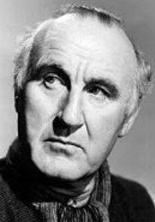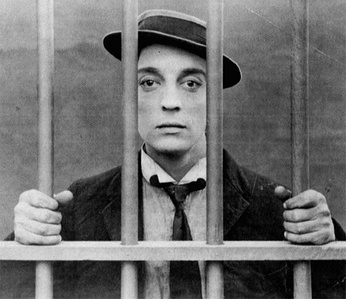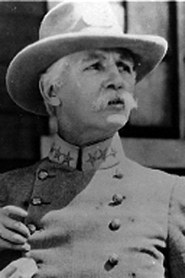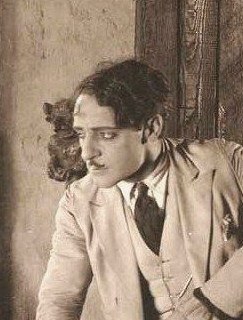航海家 The Navigator(1924)

又名: 航行者
编剧: 克莱德·布鲁克曼 Joseph A. Mitchell 让·C·阿韦
主演: 巴斯特·基顿 凯瑟琳·麦奎尔 弗雷德里克·弗鲁姆 Clarence Burton H.N. Clugston 诺贝·约翰逊
制片国家/地区: 美国
上映日期: 1924-10-13(美国)
片长: 59 分钟 IMDb: tt0015163 豆瓣评分:8.3 下载地址:迅雷下载
演员:
影评:
- 1 “航海家号”巨轮是哪儿来的呢?
虽然剧中名为“The Navigator”,她真实的名字叫做“SS Buford”,一艘绝对有故事的船,维基百科上甚至有长长的条目来介绍她。
1890年这艘船首航,当时名为“SS Mississippi”,接下来被美国军方买下,为美国和西班牙之间的战争运输补给。1919年又给了美国海军,改名“USS Buford”,负责运送一战后的美军回国。同年十二月,这艘船又被媒体称为“红色方舟”,负责运送美国的一些苏联政治犯回苏联。 1915年的 Buford 号
1915年的 Buford 号
发现这艘船都要归功于基顿手下一位很厉害的摄影师 Fred Gabouri,也是《航海家》的技术指导。当时 Frank Lloyd 正在为 Metro 也就是米高梅的前身拍一部叫《海鹰》(Sea Hawk)的电影,就在基顿剧组对面,他们借走了 Gabouri,派他去找一找老式的四桅纵帆船。本来 Gabouri 在拍完短片《船》之后就答应过基顿给他找一搜可以拍长片电影的船,正巧这时他意外发现了这艘远洋巨轮,并且发现只要两万五千美元就能买下它!基顿的剧组立马拍板买买买,并且马上开始着手为这艘船创作故事了。其实,SS Buford 才是本片真正的主角吧。
2 潜水的场景是真实拍摄的吗?
当然啦!虽然当时很多电影的所谓“水下”镜头都是隔着玻璃缸拍摄的“特效”,基顿潜水的镜头可是实打实在水下拍摄的。而且基顿秉承他一贯的“真实如切肤之痛”原则,坚持不用替身,亲自穿上潜水服,出演水下画面!他甚至将标准的潜水头盔加以改造,扩大前面的玻璃,把他的整张脸露出来。对的,就算穿上潜水服,也要露脸帅到你们!
然而这一场景的拍摄可是十分坎坷。首先要找到一个合适的拍摄地点:原计划的加州的圣卡塔利那岛水域因为鱼类到了繁殖季,水变的十分浑浊,不适合拍摄。于是他们又找了一个人工水池,这个水池还不够深,于是剧组又花钱改造,结果就在改造完注水的时候,水池底儿不结实,塌了……
倒霉的基顿剧组不得不赔钱让人家重新修好水池,又得另找地方拍摄。这回他们锁定了新地点:位于加州和内华达州边界的塔霍湖。这里水质清澈,然而却十分寒冷,基顿每次只能在水下待三十分钟,再长就要冻僵了。《航海家》其它部分的拍摄只用了五到六周,而这水底的镜头就拍了一个月!实在是不得不佩服基顿为表演献身的精神啊!
说到献身精神,基顿确确实实是在拿生命拍这场戏。据克里斯普回忆,当时为保证安全,会有一根钢琴弦(十分坚固)绑在他的头盔上,应该是以便随时拉他上来。结果有一天,工作人员忘记把钢琴弦绑上去了!幸亏当时还有一根电话电缆绑在头盔上,不然基顿真的要为拍摄献身了。默片时代实拍的水下场面,数来数去,《航海家》应当是独一无二的吧!
3 画像中吓人的老船长是谁?
如果你注意看片头的导演名单,会发现除了基顿还有另外一个人,对了,他就是这位“老船长” 唐纳德·克里斯普(Donald Crisp)。
当时基顿为了专注于表演和编剧,需要有人帮他导演一部分镜头,例如基顿和女主凯瑟琳在船上追逐的场面,基顿身在其中,也确实必须需要一个能纵观全局的人来指挥。于是他雇来同样也是当时著名导演、演员兼编剧的克里斯普。本来基顿想让克里斯普主要负责导演一些比较戏剧化的场景,但是克里斯普估计心想:跟喜剧大师一起我也要学学怎么拍喜剧啊,于是非要去掺合一些他不擅长的喜剧场景和笑料创作,结果拍出来的很多镜头都不符合基顿的要求,并且经常让演员“过度表演”。比如开头的时候外国间谍聚在一起搞事情的镜头就是克里斯普拍的,你可以看看这表演有多夸张: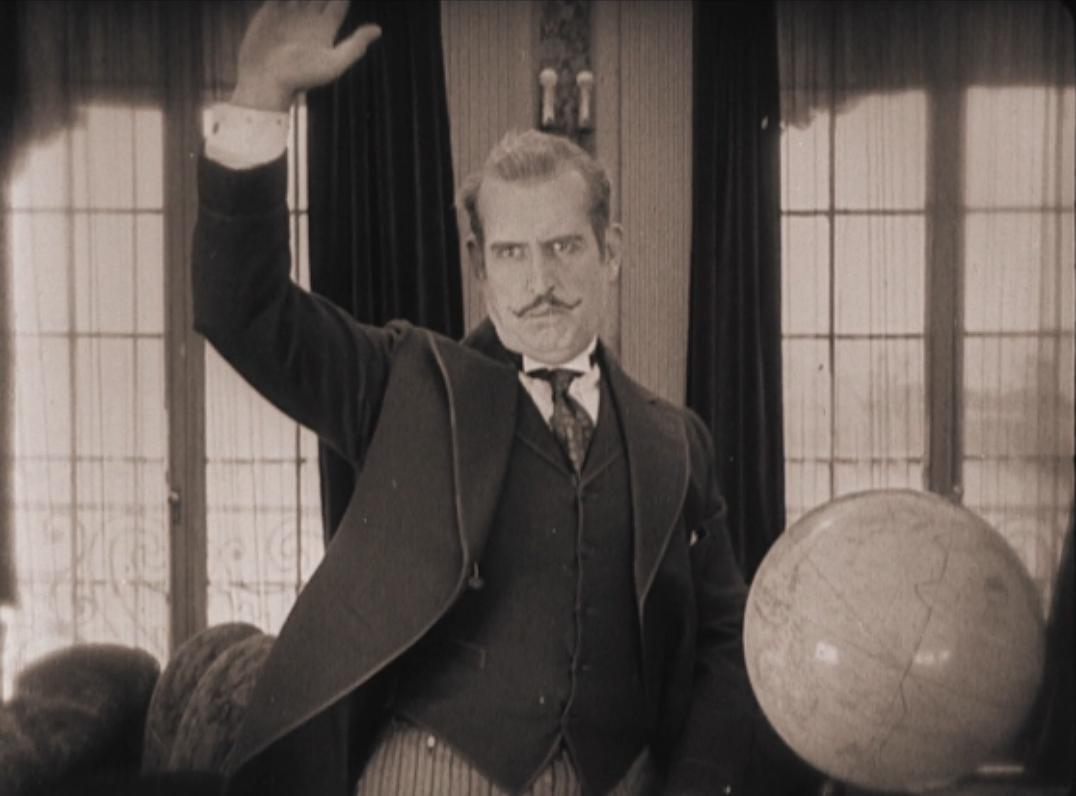
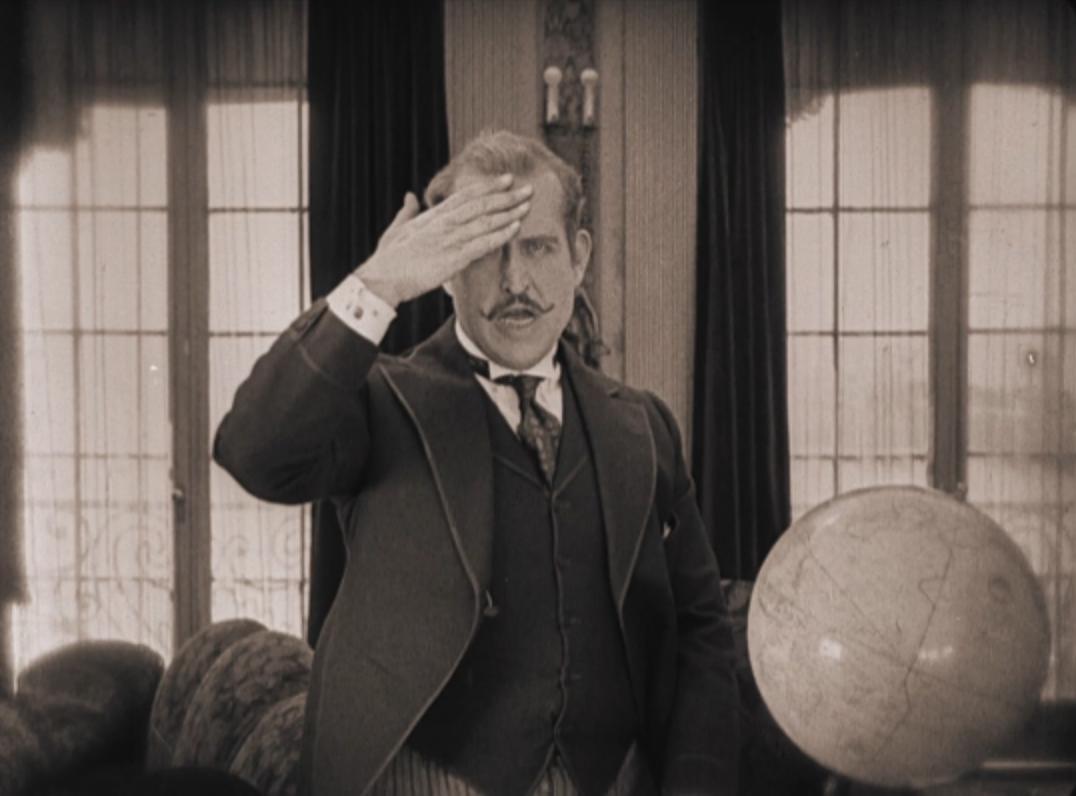
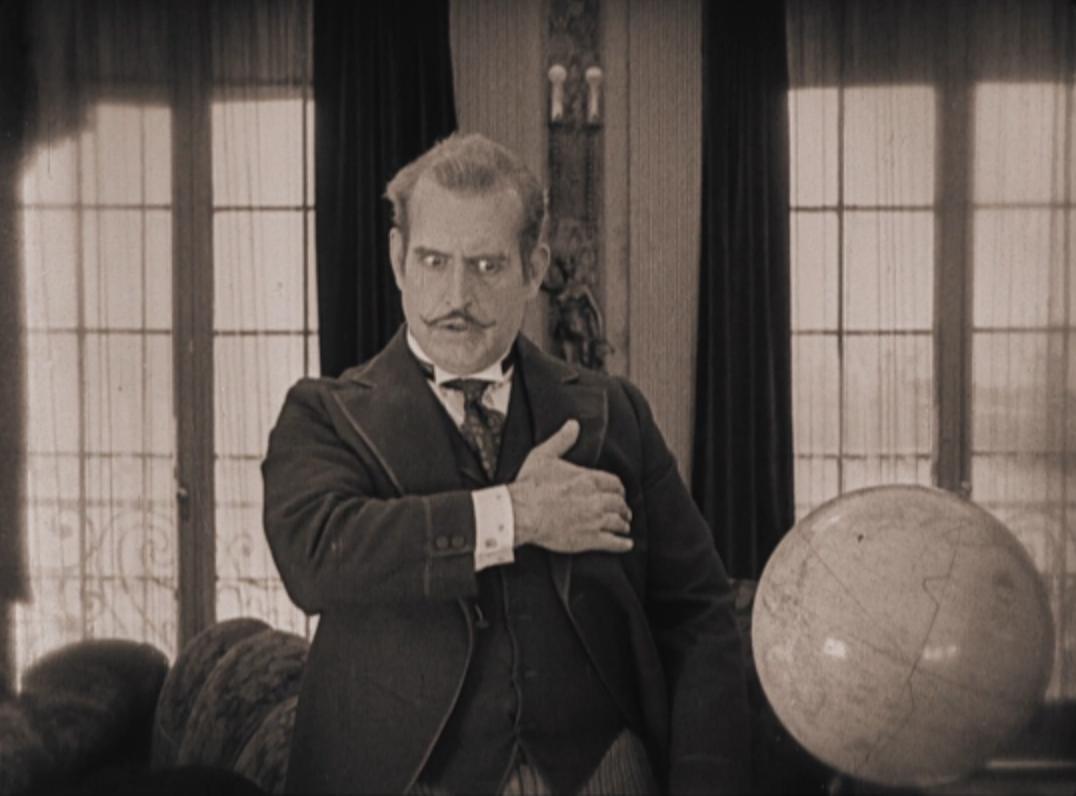
是不是,正常人哪儿有这么说话的。不过表演夸张似乎是早期电影的一大通病,相比之下基顿的电影确实是自然不少。再举个小例子,食人族把女主掳走上岸时,他给的设定是:女主本来吓晕过去了,但是闻到食人族的脚臭味被熏的醒了过来……额,想想都觉得迷之尴尬。基顿自然不能接受,他曾经表示:搞得我们剧组的甩包袱小能手跟他通宵死磕!所以,这样下去还得了,到底谁是老大了!
巧的是,克里斯普当时并不只接了这一个活,拍摄过程中他还抽了一段时间前去执导一部费尔班克斯主演的《佐罗之子 Don Q》,趁克里斯普不在,基顿赶紧跑出来搞事情,把他之前拍的大部分镜头统统作废,自己重新拍了一遍!当克里斯普回来的时候,基顿上去就跟他说:哎呀你可回来了,我们全都拍完了!(坏笑)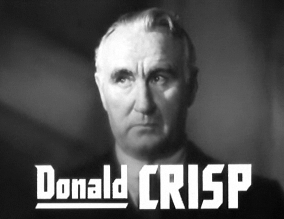
克里斯普必然是一脸懵逼,其实基顿他们还没拍完,这时正在拍潜水的场景,但是不可能整个剧组都潜入水下,只需要基顿和摄影师就够了,所以对于克里斯普来说,他确实可以领便当走人了。
然而克里斯普的大名还是写在了“导演”一栏上。不知道是不是想要调戏他一把,基顿把克里斯普凶神恶煞的大头照放进了影片,让他以这种方式上了镜。这位老船长的凝视也成为了一个让观众笑掉大牙的梗。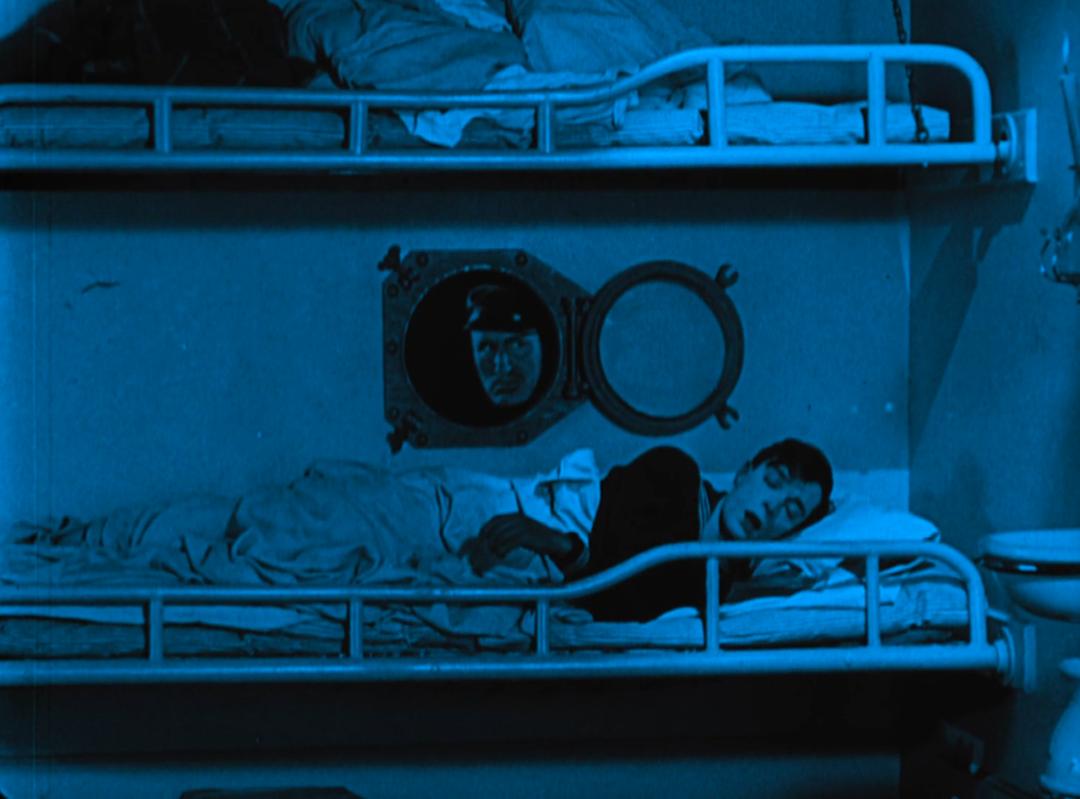
4 基顿最令人心酸的一个镜头是什么?
很多人不知道,《航海家》中有一个镜头被基顿亲手剪掉了。在水下的时候,基顿智斗龙虾、剑鱼和章鱼,本来他还设计了一个场景:基顿拿起一颗海星戴在胸前扮起了交警给鱼指挥交通,徒手拦住一个鱼群只为让一条孤单的小鱼在他们面前先通过“路口”。为此道具组制作了一千多只橡皮鱼,用机械操作,劳神费力地拍完了这个场景。然而在试映的时候,观众却没有发笑。基顿自己也反思了一下,发现这个笑料对于当时正处在紧张气氛的故事情节并没有推动作用,但是他自己又很喜欢这个梗,无法割舍,于是他把这一片段从正片里剪了下来,放进了预告片,以这种方式又收获了观众的捧腹大笑。欣慰的是这个片段没有就此丢弃,心酸的是即使胶片存在,现在也很难被人看到了。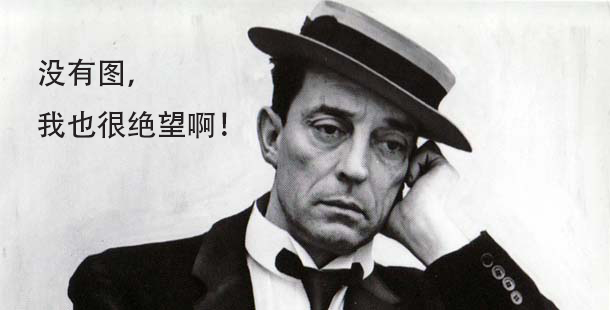
5 上色版这么有毒,莫不是假电影?
如果你参加了本月上海的放映活动(详情戳 ),一定会注意到当时放映了上过色的版本,并非完全的黑白电影。难道是被人做了手脚?错!其实这种简单粗暴的色彩恰恰是当年电影院放映的原始版本!惊不惊讶!
在当时,给黑白电影上色是一种潮流,或者说标配,虽然现在看来无法理解,当时的人们可能觉得这种色彩对电影来说是一种尊重和技术的进步吧。于是就有了这种毒毒的颜色:琥珀色的白天,蓝色的夜晚和绿色的水下场景。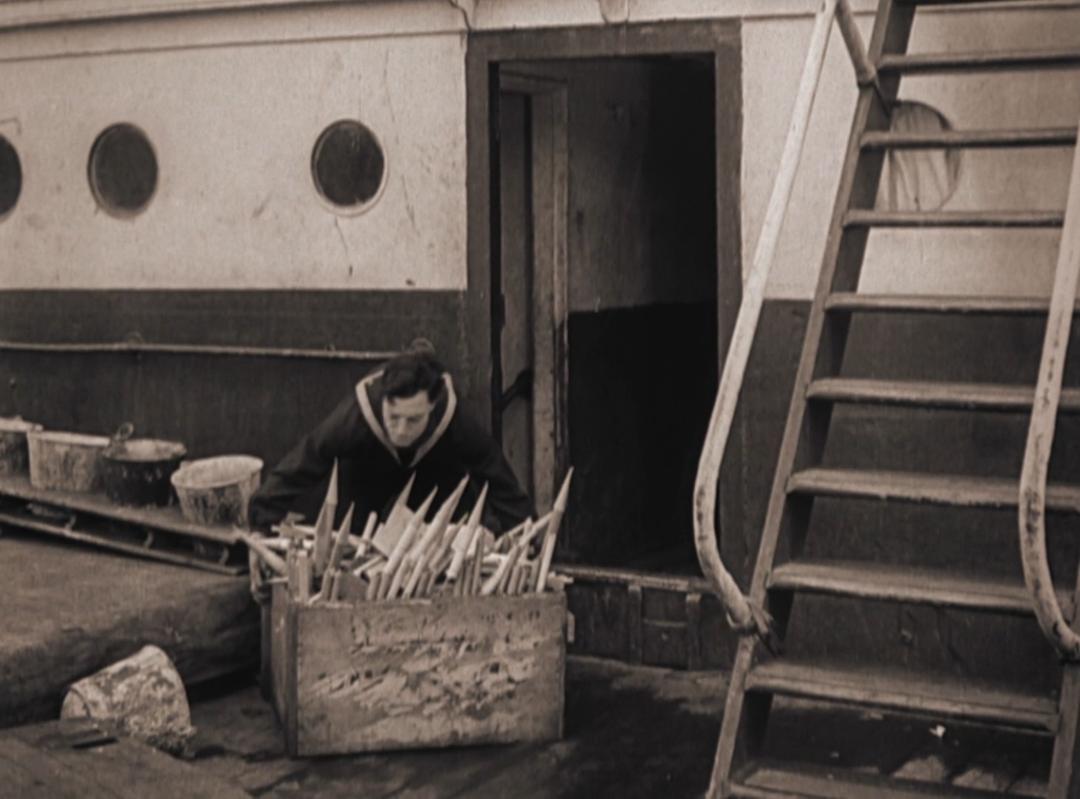
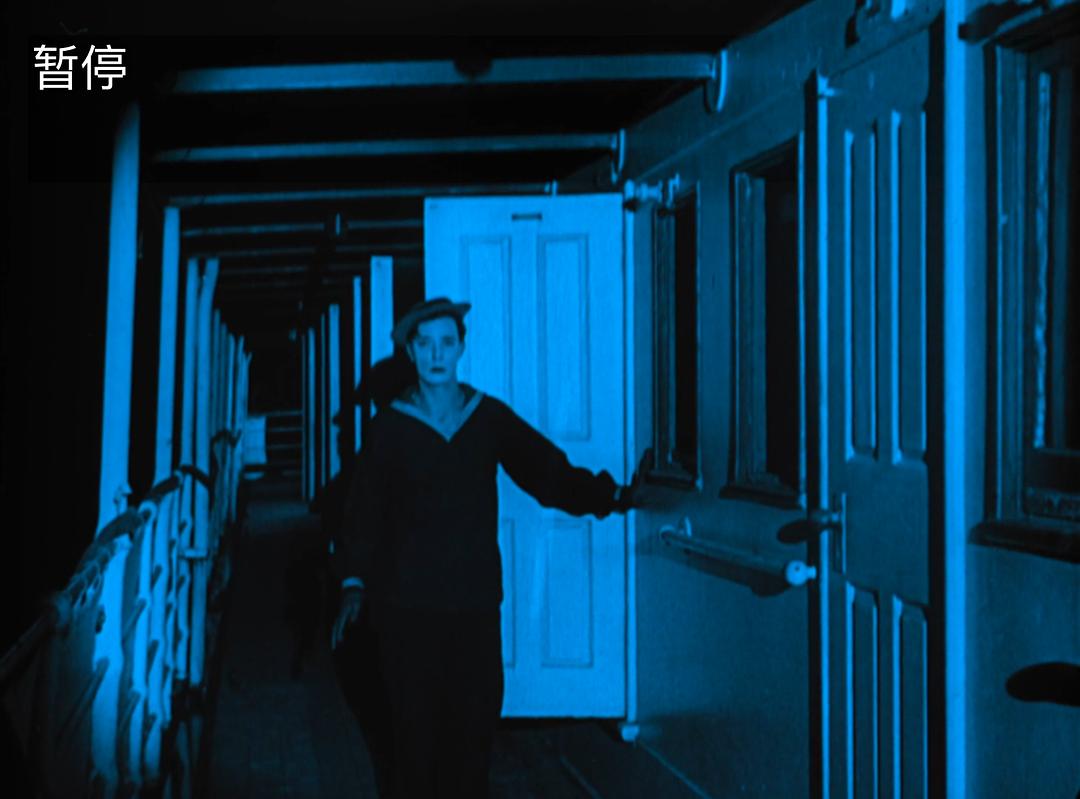
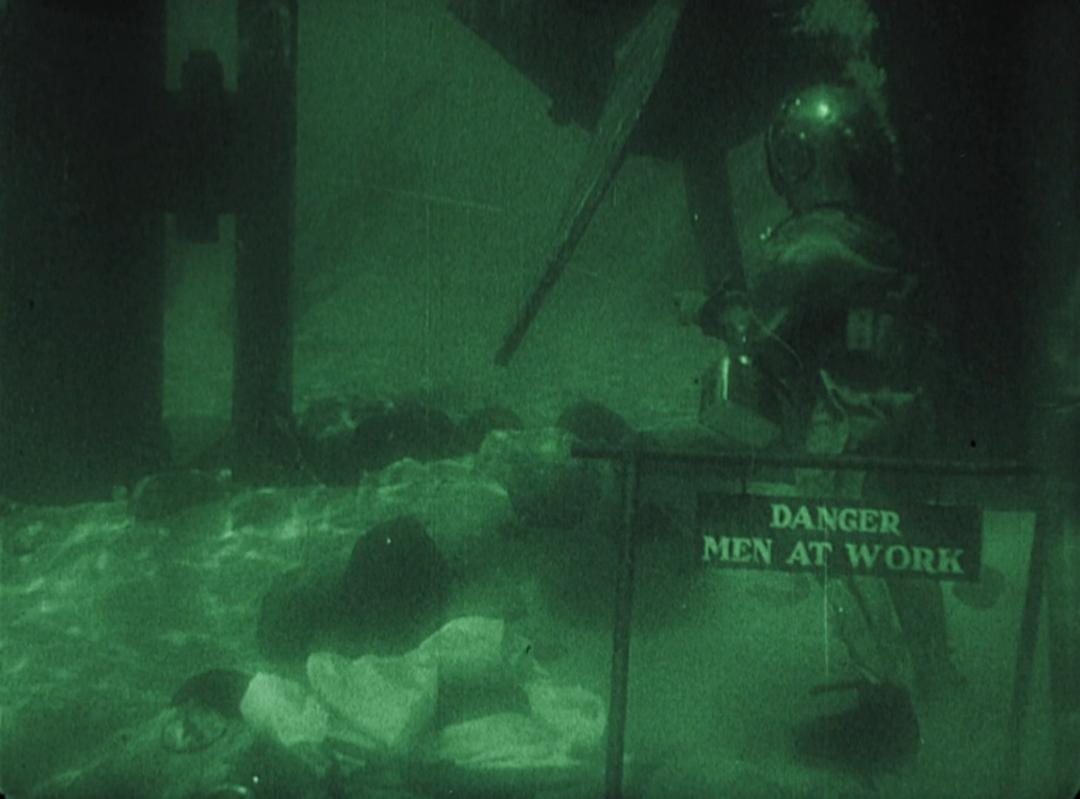
而且,这个上色的版本在当年电影院上映后就没人能看到了,可以说失传已久,现在的这个版本的出现,也许是为了把大家带回那个年代吧。总之,虽然有毒,但是能看到其实是蛮幸运的啦!
6
彩蛋!!!听听基顿“情有独钟”的一首歌
还记不记得在船上第一个夜晚,把基顿和凯瑟琳吓了个半死的那首歌呢?这首歌也是确实存在的,名叫“Asleep in the Deep”,创作于1897年。
值得一提的是,这居然不是这首歌第一次在基顿的电影里“出镜”了!基顿1921年的短片《剧院》中,如果你留神看那张写满了 Keaton 的节目单,会发现其中有一首曲目就是这首“Asleep in the Deep”!看来基顿一直对这首歌念念不忘啊!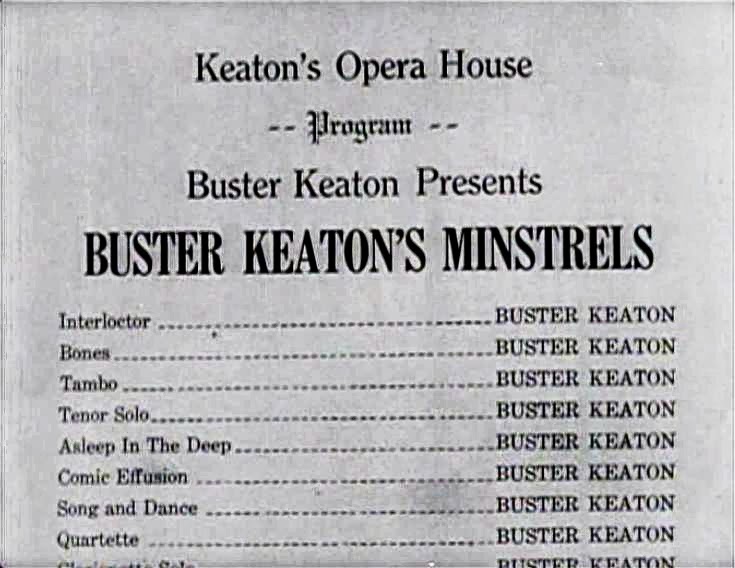
如果想听这首歌的原声录音,欢迎移步【基顿的剧院】微信公众号原文收听哦!
以上内容挖掘自Bruce Lawton 制作的《航海家》纪录片,以及《航海家》电影解说,感兴趣的朋友可以戳 直达B站观看这部8分钟左右的纪录片,有中文字幕的哟~
本文首发于【基顿的剧院】微信公众号,作者为本人,转载请联系公众号~
关于我们:
基顿的剧院
四个基顿爱好者发起的粉丝团
分享各种关于基顿和默片的有趣内容
还有线下活动/创意周边哦~欢迎关注微信公众号和微博
jcCTVA 310
Tim Halloran
27 September 2017
A Short Review of “Sherlock Jr.” and “The Navigator”
On September 21st, 2017 at 7 PM, I watched two remarkable films, namely “Sherlock Jr.,” and “The Navigator.” They were mainly produced, acted, and directed by the same person, Buster Keaton in 1924. These two films are typical examples of Buster Keaton’s featured style, a romantic, comedic silent film with a happy ending. The setting of mise en scene and the storytelling skills that Buster Keaton used are forward and experimental.
“Sherlock Jr.” and “The Navigator” are romantic silent films and their characters share similar goals, chasing the love of their life. In detail, Buster Keaton in "Sherlock Jr." acts as a poor theatre worker who has to compete with a rival in love (a thief) and try to engage with a woman. At the end of the film, the theatre worker gets back together with the woman even though he was framed by his rival and asked to leave the woman alone. In "The Navigator," Keaton acts as Rollo Treadway, a man who goes on a honeymoon alone after failing to marry his dream wife. However, Rollo inadvertently meets a woman on a ship and they embark on a risky journey, but Rollo gets a kiss from the woman at the end. "Sherlock Jr.” and "The Navigator" both end in happiness: the protagonist gets together with the love of his life.
Although these two features have a different story setting and character backgrounds, their main roles still play similar characters. For instance, Rollo Treadway in "The Navigator" is an honorable man who was born in a first-class family, whereas the theatre worker in "Sherlock Jr." is poor and debased. They live in a different world but share similar personalities. They never laugh, but they are sincere and both have a warm heart. Nonetheless, they are not good at putting their ideas across and pleasing others; these protagonists in different classes still share similar characteristics: they are both unsmiling and inarticulate, but sincere.
The most remarkable scene that Keaton directed is the dream scene in "Sherlock. Jr." The scene takes place at a classical theatre, which is on a movie screen stage. These dream sequences wherein the theatre worker walks in or out of the movie screen were very dramatic; the continuity of editing was also an excellent arrangement and the actions were perfectly matched.
Overall, “Sherlock Jr. " and "The Navigator" are typical examples of Buster Keaton’s featured style, brought forward in both films. Before I took part in the retrospective of “Sherlock Jr. ", I had seen some of Keaton’s feature films, namely "The Saphead," "Three Ages," "Our Hospitality" and several of his short films. However, the night of September 21st, 2017 became my best silent film experience. I love the feature of "Sherlock Jr." Furthermore, the retrospective of Buster Keaton's features also made me one of Buster Keaton’s enthusiasts.
